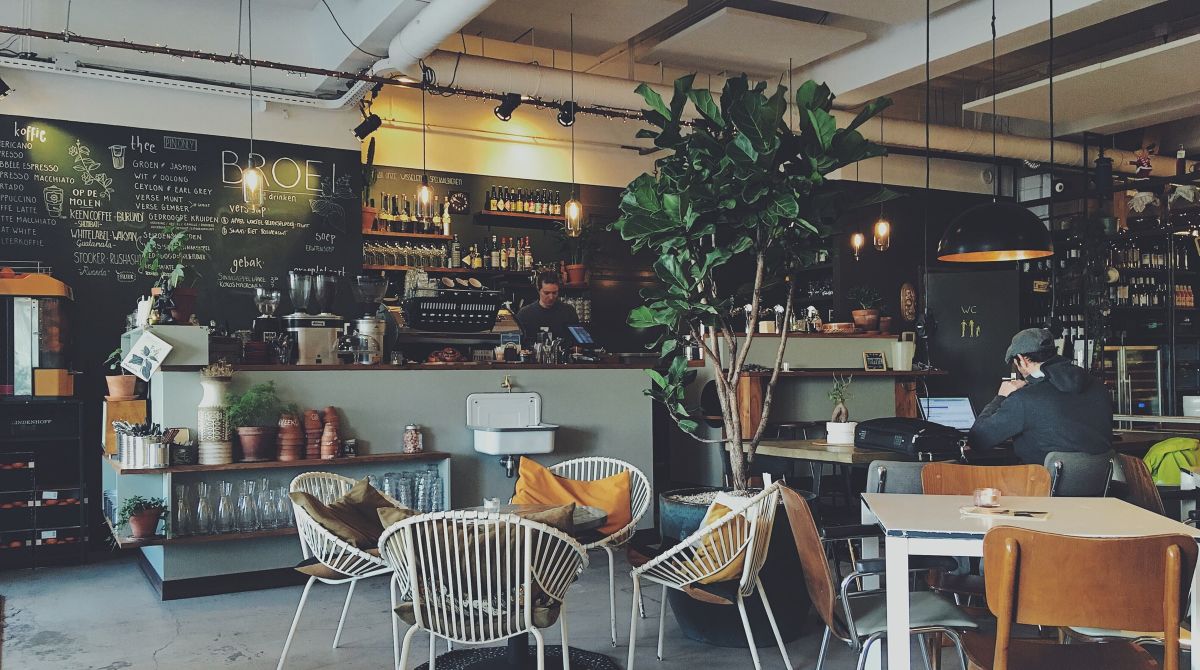Ingredient branding is recipe for success for coffee shops and restaurants, new research from Kingston University marketing expert reveals
Posted Thursday 25 November 2021
 Sales were 40 per cent higher when a coffee shop sold a branded smoothie drink versus an unbranded one, found Kingston University research into the impact of ingredient branding on sales in coffee shops and casual restaurants.
Sales were 40 per cent higher when a coffee shop sold a branded smoothie drink versus an unbranded one, found Kingston University research into the impact of ingredient branding on sales in coffee shops and casual restaurants.
Restaurants and coffee shops that use branded ingredients in their menu items and products could significantly increase sales and how much customers are willing to pay, new research from a Kingston University marketing expert shows.
Dr Ceyda Paydas Turan, senior lecturer in marketing at Kingston Business School, has been examining the impact of ingredient branding on customers’ purchasing behaviour and willingness to pay based on perceptions of product quality.
In marketing, ingredient branding involves introducing another brand to a branded product or service to enhance its appeal. These intentional brand alliances happen when the sum of the combined brands is more competitive than individual brands. Examples of co-branding include a limited-edition Apple and Hermes watch, North Face coats with a Gore-Tex membrane, Häagen-Dazs ice-cream with Baileys and Mercedes-Benz cars with Bosch brakes. Most recently, retailers Marks & Spencer and Ghost have collaborated on a limited-edition clothing collection.
“In today’s business world, brand alliance is more important than ever as brands face fierce competition. The resources to meet ever-growing consumer demands are limited while the pandemic has made the situation even more challenging,” Dr Paydas Turan said.
“Responding to customers’ needs alone can be difficult and many forward-thinking organisations are realising the power of brand alliances which can enhance competitiveness and create differentiation between products or services.”
For the study, Dr Paydas Turan conducted a series of online scenario-based experiments involving 660 participants followed by a field experiment in a coffee shop over six days in two consecutive weeks. The online survey found that participants were prepared to pay up to nine per cent more in a restaurant for a pizza with Galbani mozzarella and a brownie with Lindt chocolate compared with the same restaurant menu items with unbranded ingredients.

Dr Paydas Turan then held a live experiment to validate the findings of her online research, to examine actual purchasing behaviour, not solely intentions. In the coffee shop study, sales of an unbranded smoothie drink in one week were compared with purchases of a branded smoothie drink, Love Smoothies, over the same period the following week. Despite being the same product at the same price and accounting for variables such as weather temperature over the six days, sales were 40 per cent higher – 56 units compared with 40 units – for the branded drink.
These results provide convincing evidence of the tangible benefits of ingredient branding to a service business, Dr Paydas Turan, who has an industry marketing background, said. They contribute to current literature which has largely focused on the impact of this marketing strategy on sales of fast-moving consumer goods (FMCGs), she added.
“Both the online and real-life experiments show that there is a significant positive relationship in service industries, such as coffee shops and casual restaurants, between ingredient branding and customers’ perceptions of quality and willingness to pay more,” she said. “It also demonstrates actual purchasing behaviour in a coffee shop and builds on previous studies which only looked at purchasing intentions.”
Ingredient branding could be particularly beneficial to service industries where items are intangible at the time of choosing or purchasing, unlike seeing an actual product.
“Customers do not know exactly what they will get when they make a choice in a coffee shop or restaurant. Therefore, these services need something to signal the quality and future performance of what they are selling,” Dr Paydas Turan explained. “My research shows how a service business characterised by intangibility can benefit from incorporating a tangible consumer goods brand as an ingredient to their products.”
However, whether ingredient branding would benefit all types of service businesses, such as high-end restaurants, requires further research.
Previous research by Dr Paydas Turan on the success drivers of brand alliance indicated that brands must focus their attention on finding the right partners, emphasizing the importance of brand image and product category fit in forming brand collaborations.
“There is also the issue of how a crisis in one brand might affect the partner brand, so ingredient branding is not without its risks. I’m now conducting further research on how businesses can protect their brands if there is an issue with the partner brand in their alliance,” Dr Paydas Turan concluded.
“The challenge for the business world is how to form brand alliances, make them work and recover if something goes wrong. There is a clear managerial need for more insights into ingredient branding strategy for service businesses wishing to incorporate consumer goods brands and I hope my research and further research will contribute to these insights.”
• Dr Paydas Turan’s research paper was published this month in the Journal of Retailing and Consumer Services.
Contact us
General enquiries:
Journalists only:
- Communications team
Tel: +44 (0)20 8417 3034
Email us



